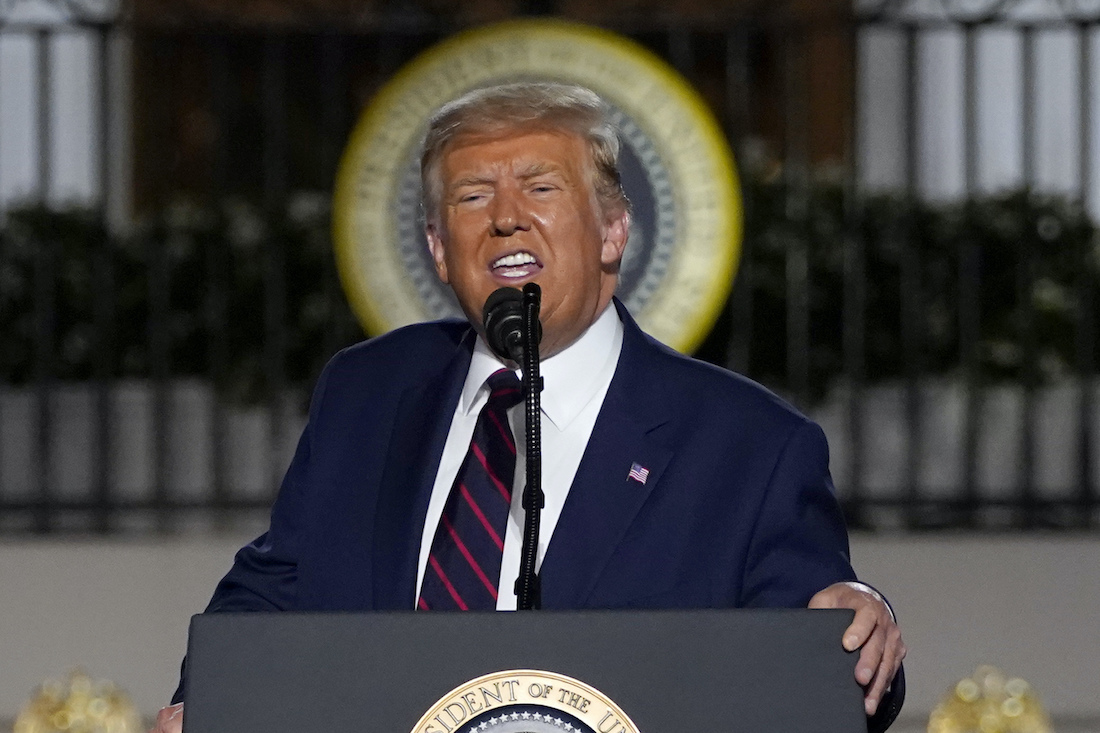The final night of the 2020 Republican National Convention included powerful lines promoting the Trump administration’s drug price policies. President Donald Trump claimed that his recent executive orders on drug prices “will massively lower the cost of your prescription drugs.” His daughter Ivanka likewise said that her father “took dramatic action to cut the cost of prescription drugs.”
In 2015, U.S. Americans spent more than twice the OECD average on prescription drugs. Trump signed a price control-based executive order in July that would theoretically lower drug prices by pegging U.S. prices to those of European nations. However, the EO – and both Trumps’ speeches – run into three problems.
First, few details have been released about the EO. Trump set an August 24 deadline for the pharmaceutical industry to act before he implemented the EO, but the date passed without any further action. Without details, it’s hard to claim “dramatic action” was taken to “massively lower the cost of your prescription drugs,” especially when the most comparable policy is Trump’s 2018 Medicare Part B proposal – which Kaiser Family Foundation reports only impacted about seven percent of total U.S. prescription drugs. Guesswork does not a policy make.
Second, price controls might reduce costs at the counter – but they’ll also reduce Americans’ ability to access life-saving and other important drugs, like a COVID-19 vaccine or recovery medications presently in development. Academic research and real-world results make this clear. For example, Trump’s Council of Economic Advisors (CEA) issued a report in February 2018 which verified that drug research and development is not paid for by other nations – but by U.S. consumers, who provide 70% of the OECD’s pharmaceutical profits.
Our prices are higher, because socialist and socialist-leaning nations can count on Americans to pay more for drugs. We should not emulate these nations. As the Wall Street Journal pointed out, citing an industry report, most drugs are flops. This means that manufacturers invest significant money to achieve the rare success. “Big Pharma,” as the president called it, should be rewarded for these critical investments, just like in any other industry.
The academic research highlights how the pharmaceutical industry benefits average Americans. The 2018 CEA report cited a 2004 MIT study which laid out how price controls and other government interventions reduce drug production and innovation by four times the level of market interference. And a 2004 joint report from the Brookings Institution and the American Enterprise found that 198 fewer drugs would have been “brought to the U.S. market” between 1981 to 2000 under price control measures. The researchers also found that price controls would impose an average social opportunity cost of “approximately $1.6 billion” per drug – and the loss of some drugs would have been “far greater” yet. “When compared to the estimated benefits of the additional pharmaceutical R&D that was undertaken because these hypothetical price controls were not implemented, these costs appear to be very small.”
Real-world examples illustrate these findings. A 1999 Boston Consulting Group study found that pharmaceutical price controls in Greece, Belgium, and France delayed the drug development-to-market timeline by up to a year. Contrast that with the U.S., which produced 57% of the world’s medicines between 2000 and 2010, according to a 2011 Milken Institute report.
Third, the Wall Street Journal’s critique of Trump’s price control plan raised a critical point about U.S. pharmaceutical policy:
The broader question is whether the GOP can sell Americans on a health-care agenda beyond frightening everyone about single payer. Aside from welcome support for telemedicine during the pandemic, the ostensible party of health-care innovation and choice has had little on offer about, say, making insurance more portable or affordable. Drug price controls are what a party resorts to when it stops thinking about health-care policy.
This is a problem in both parties: Go after the boogeyman (or woman) without actually having an answer to the problem. Trump’s second-term agenda has some grand goals but few principles or policies to explain how those goals will be accomplished. This governing style killed Republicans’ efforts in 2017 to repeal the Affordable Care Act – even though the party had seven years to come up with a good, free-market alternative. This is one of the problems of not clearly thinking through and articulating the details of a policy. It is no less magical thinking to believe price controls will improve health than to believe that eliminating police and reducing legal firearm ownership will protect innocents civilians from violent criminals.
Instead of price controls, Trump could encourage states to allow doctors to fill more prescriptions. This would eliminate pharmacy middlemen and accomplish one of the goals of one of Trump’s other EOs: reducing prices through consumer transparency. He could also push the FDA to approve drugs more quickly without compromising safety, cutting pharmaceutical costs, increasing consumer access to drugs, and creating greater opportunity for private-sector innovation.
Conventions are hardly a time for in-depth policy analysis, but they set out the party’s general direction. Democrats are clearly taking a simple approach – campaign against Donald Trump. Trump is taking the approach generally favored by incumbents – promising that his policies will improve Main Street America’s lives. Regretfully, his price controls will do just the opposite.
(Photo credit: AP Photo / Evan Vucci.)

